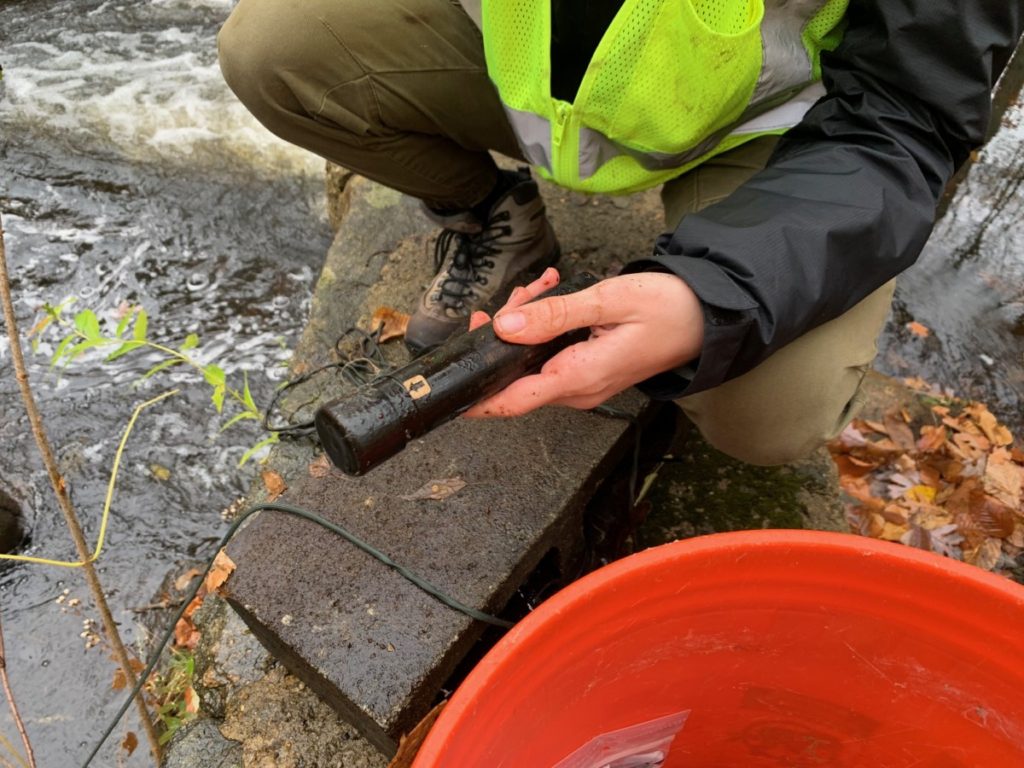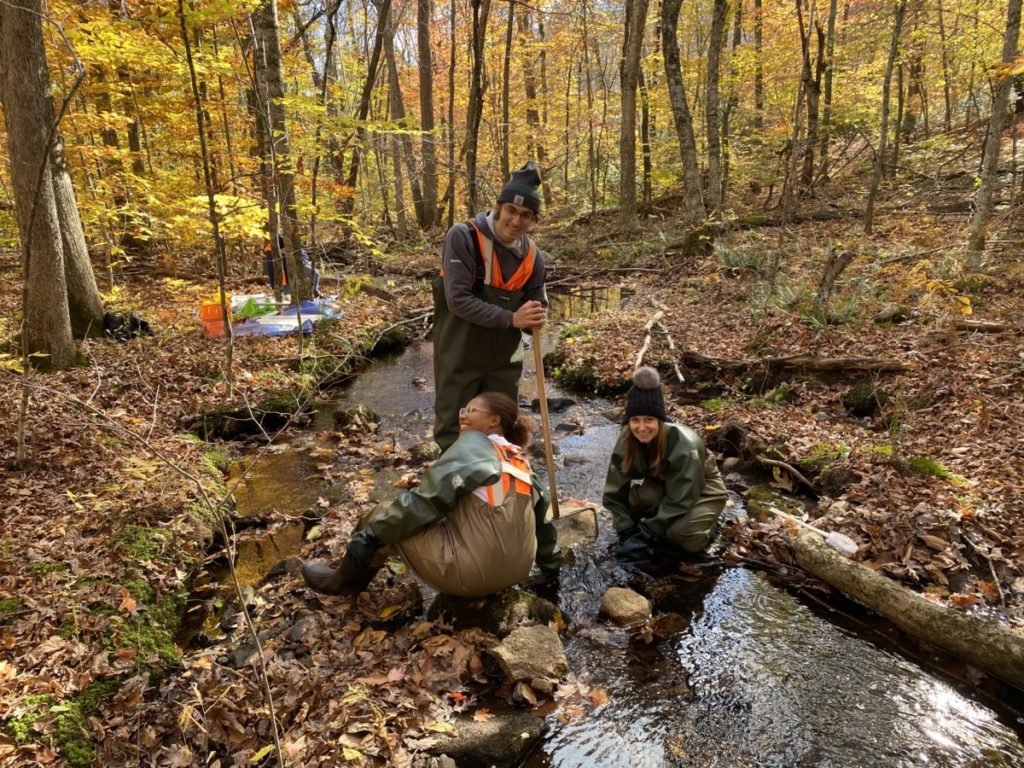Water Quality Monitoring
Ten temperature loggers are deployed every summer and record measurements every hour. The loggers allow us to monitor stream temperatures in the warmest months of the year when warm water can have a negative impact on fish and other aquatic life. Native brook trout need temperatures under 19°C for growth and generally cannot survive temperatures above 24°C. The data we collect is analyzed to determine the stream thermal class, whether the streams are cold, cool, or warm. Factors that can raise stream and river temperatures include the presence of dams, increased exposure due to inadequate streamside vegetative buffers, and runoff stormwater.

Eight conductivity loggers remain in streams year-round recording measurements every hour. Conductivity readings allow us to monitor the levels of dissolved salts and other inorganic materials in the water by measuring the electrical current. Stream conductivity is primarily a result of geology and soils, however there is a growing concern of chloride (salt) input which increases conductivity and can have a negative impact on the freshwater fish and other organisms living in the stream. Our goal is to gain a better understanding of how salt is impacting our local streams and groundwater.

Streams are monitored every summer for ten weeks using handheld instruments. Conductivity, temperature, pH, total dissolved solids, salinity, dissolved oxygen, nitrate and chloride are all measured at the same time and day each week. The purpose of these measurements is to establish baseline conditions. The same locations are monitored for at least five years and then new locations are selected. Nine sites were monitored from 2014 to 2019 and nine different sites are being monitored from 2020 to 2024.
2024 Summer Baseline Monitoring Data is available on the National Water Quality Monitoring Council's water quality portal. Organization ID "ERWSCC". Project ID "Baseline 2024"
Riffle bioassessments are the analysis of stream riffle habitats through the collection and identification of benthic macroinvertebrates. Benthic macroinvertebrates are insects that live underwater in the riffle habitats of streams and rivers. Many of them, including caddisflies, stoneflies, mayflies, and dragonflies, spend most of their lives underwater in larval form before emerging from the water, undergoing metamorphosis and becoming flying insects. Certain macroinvertebrates are considered indicator species as they are especially sensitive to different water quality factors. Therefore their presence in a stream indicates a healthy stream habitat. In Connecticut, if four or more "most wanted" indicator species are found, as identified by CT DEEP, the stream can be considered a healthy habitat.
The Eightmile River partners with the CT State Community College Three Rivers Campus Environmental Engineering program to have students, under supervision of professor Diba Khan-Bureau, conduct up to 16 riffle bioassessments in the watershed each year.

